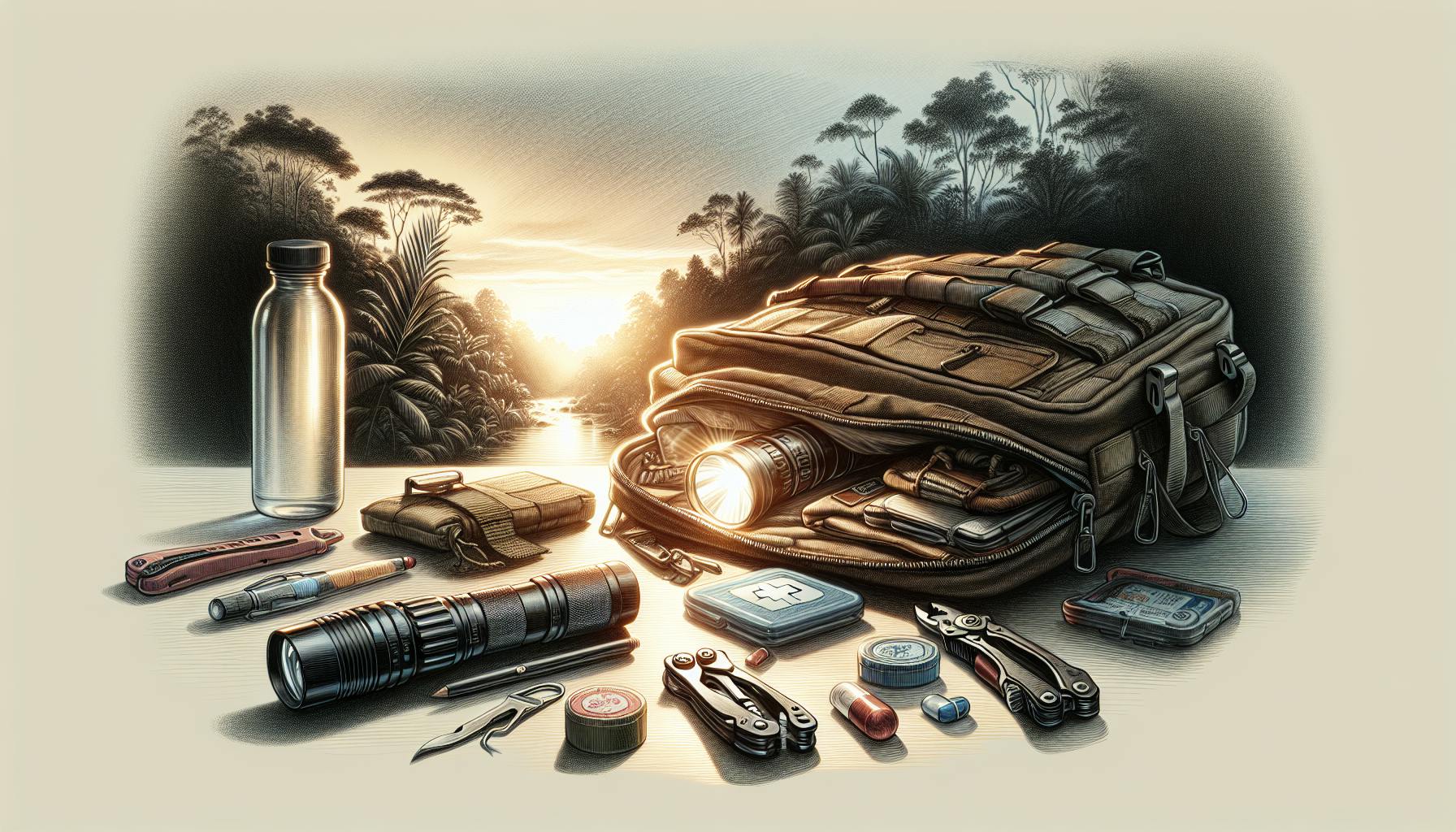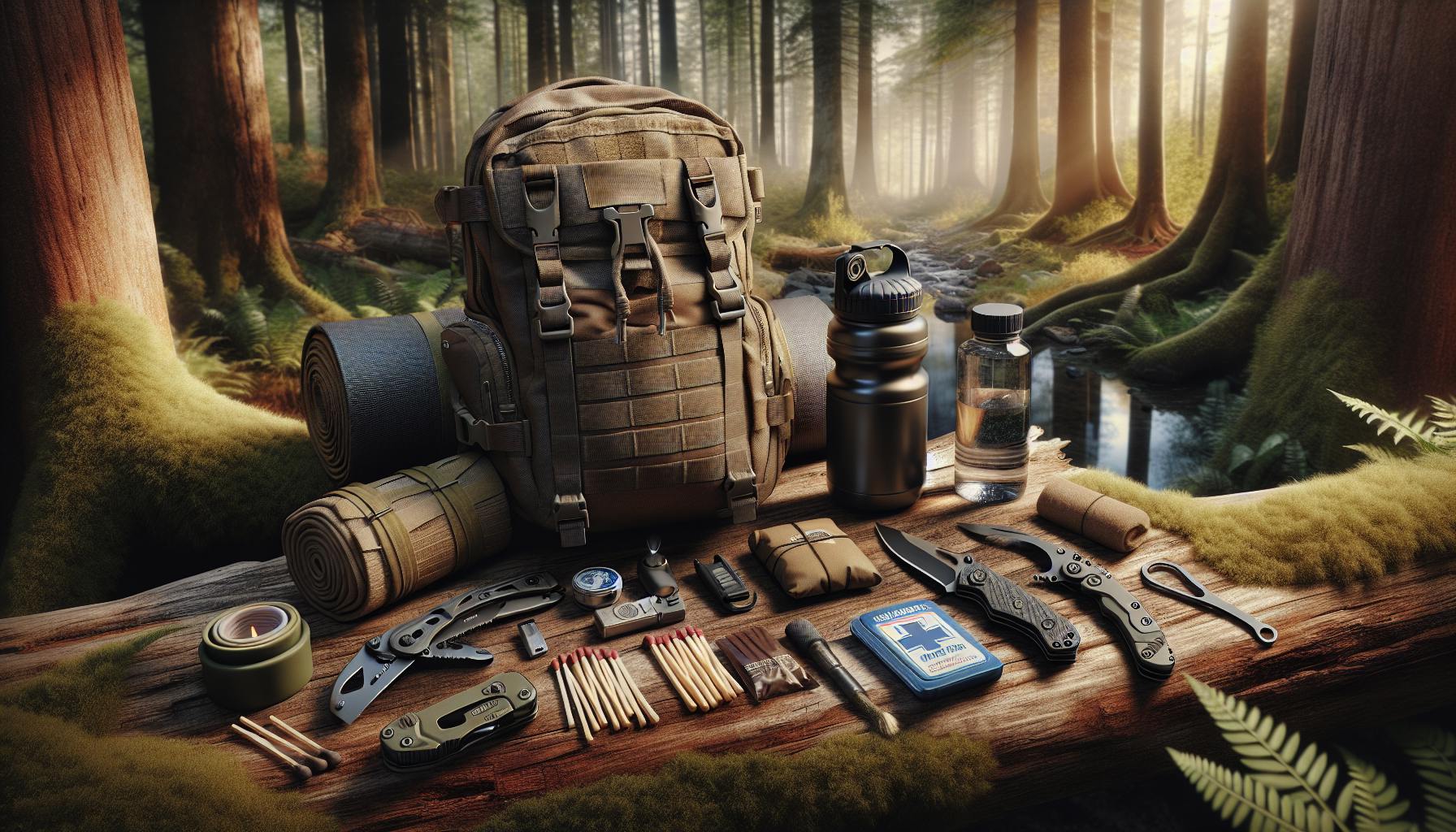Introduction to Survival Tinder
Having the ability to start a fire quickly and reliably can mean the difference between life and death in an emergency situation. Survival tinder is a critical component of fire starting that allows you to ignite flames even with limited resources. Tinder refers to very fine, fluffy, quick-burning material that catches the initial spark and small flame to spread to kindling and fuel. For preppers and survivalists, learning about effective natural and commercial tinders is an essential skill that could save your life.
This article will provide a comprehensive overview of survival tinder, including what materials work best and techniques for finding, preparing, and using various types of tinder in the wild. We'll share key properties to look for, give examples of common natural and commercial tinder options, and explain the importance of proper tinder when trying to start lifesaving fires with minimal equipment. Mastering tinder collection and preparation ensures you can create flames rapidly even in harsh environments.
Read on for indispensable advice to help make fire starting easy by including top-quality survival tinder in your emergency kits and survival knowledge.
What is Survival Tinder?
Survival tinder refers to extremely flammable material used to initially ignite kindling and fuel when starting a fire in wilderness or emergency situations. It serves as the first and often most important component when attempting to build a fire with limited resources.
Effective tinder should readily accept a spark or small flame and burn hot enough to spread fire to your kindling. Having proper natural or commercial tinder largely eliminates the difficulty and frustration of lighting a vital source of fire for survival.
Finding and processing suitable tinder materials is a fundamental bushcraft skill that all preppers must learn and practice. It lays the foundation for successful fire starting.
Key Properties of Effective Tinder
The best tinder has certain properties that make it ignite and spread flame quickly:
- Extremely fine, loose material with high surface area for flames to penetrate
- Highly flammable fibers that easily catch sparks
- Burns fast and hot without requiring hard blowing or fanning
- Very low moisture content - bone dry materials work best
Examples of great natural tinders include fluffy seed fibers, shredded bark and plant materials, and resin-rich wood scrapings. Commercial options like wax-soaked cotton and synthetic dryer lint serve wonderfully as fire starter tinders.
Tinder vs Kindling vs Fuel
When building a campfire or emergency fire, you need three components:
-
Tinder is the ultra-fine first stage that ignites from a spark and spreads flame to kindling.
-
Kindling consists of small sticks and twigs that ignite next and pass fire on to the fuel.
-
Fuel is larger logs and branches that keep the fire burning once lit.
Having ample dry tinder eliminates much of the frustration beginners face when starting fires with wet kindling. Prepare enough so that your tinder burns for at least 30 seconds to spread flame to the kindling.
Why Survival Tinder is Essential
Being able to quickly and easily start a fire with minimal equipment can save your life in a wilderness emergency. Tinder is often the difference between success or failure when attempting to ignite a warming and signaling fire with limited resources.
Natural tinder provides a readily available fire starter when you lack commercial solutions. Take time to practice finding and preparing tinder so you can collect it swiftly when needed.
Having ample tinder on hand removes the most challenging part of starting a fire. It ignites even when kindling is damp.
Fire for Warmth
Fire's warmth prevents hypothermia which can rapidly set in when stranded outdoors without shelter, especially overnight. The hotter your tinder burns, the easier it will be to light larger fuel and sustain a warming fire.
Fire for Light
Flames allow crucial light after dark for locating supplies, navigation, and safety. Quality tinder lets you avoid lengthy struggles trying to ignite a fire for light. It extends productive waking hours when stranded without electric lights.
Fire for Signaling
Fire makes an excellent attention-grabbing signal for rescuers. The brighter the flames, the more visible from a distance. Dry, ready tinder helps you quickly create a large signaling fire.
Finding Natural Tinder in the Wild
Look for fluffy, extremely fibrous, and finely textured materials when foraging for natural tinder. Excellent options include certain seed fluff, soft shredded bark, resin-filled scrapings, and delicate plant fibers.
Target standing deadwood and bone dry plants rather than living greenery for your tinder. Avoid anything damp or rotten. Gather abundantly more than you think you need, as fine tinder compacts down.
Prime Tinder Plants
Excellent tinder plants include:
- Milkweed, cattail, thistle, and bulrush fluff
- Shredded inner bark from birch, aspen, cedar, cottonwood, and juniper
- Punky dry pinesap wood or inner cedar bark
- Brittle dead grasses and straw
- Lichens and mosses growing on dry trees
Seed Fibers and Fluff
Look for:
- Fluff from the inside of milkweed, cattail, thistle and other seed pods
- The fine inner fibers of yucca, agave, and other arid plants
- Shredded palm fronds and coconut husk fibers
- Punky mushroom mycelium that readily accepts sparks
Other Natural Tinder Sources
Additional tinder options include:
- Fine dry scrapings from dead branches and logs
- The soft inner fibers of pine cones and cottonwood pods
- Sawdust and wood dust - ensure it is fully dry
- Extremely thin dead twigs or grass stems
- Cotton-like fibers from cattail heads or cottonwood seeds
- Sap and resins from birch bark and fatwood help extend burn time
Recommended Commercial Tinder Options
Convenient store-bought tinders include:
- Cotton balls coated in petroleum jelly or beeswax
- Synthetic dryer sheets - avoid strongly scented brands
- Wax-infused sawdust, cardboard, cotton pads and wood wool
- Commercial fire starter cubes containing wax or petroleum
- Charcloth made by slowly burning cotton rag in an airtight tin
- Trioxane, hexamine, or esbit fuel tablets
Quality tinder products are available from top brands like Zippo, UCO Gear, and Ultimate Survival Technologies.
Making Petroleum Jelly & Beeswax Cotton Balls
To make your own:
- Melt petroleum jelly or shaved beeswax in a double boiler or tin can
- Coat cotton balls thoroughly while avoiding excess dripping
- Allow to cool and dry - the wax makes them burn longer
- Store in an airtight bag or container and use within 1 year before deterioration
- These light easily from sparks and burn steadily for 1-2 minutes
Using Synthetic Dryer Sheets
Dryer sheets work reasonably well by:
- Avoiding heavily scented brands that may smoke but not fully ignite
- Pulling apart sheets and using just a small wad for tinder
- Fluffing sheets into a loose ball before trying to ignite
- Storing in a sealed bag to keep dry until use
- Teasing apart sheets to increase surface area
How to Use Survival Tinder
To use tinder effectively:
- Prepare it by shredding, chopping, teasing, and fluffing into a very fine texture.
- Have a large handful or pile ready - more than you think you need.
- Keep it bone dry by storing in sealed bags or containers.
- Ignite by focusing sparks or flame onto the tinder bundle for 10-20 seconds.
- Shape tinder into a bird's nest, tepee, or wigwam around the ignition source.
- Gently blow on glowing embers once lit to spread the fire before adding kindling.
Firesteel Sparks
When using sparks:
- Aim showers directly into the tinder bundle using a ferro rod or knife spine.
- Steel scraper sparks penetrate dense tinder better than matches or lighters.
- Have very fine, fluffy tinder to readily catch and smolder from sparks.
Lighters and Matches
To ignite with a lighter:
- Shield the flame from any wind when applying to the tinder.
- Hold flame to the tinder bundle for 10-20 seconds until embers form.
- Blow gently on glowing embers to spread fire before adding kindling.
Tinder Placement Tips
For best results,
- Shape tinder into a bird's nest, tepee or wigwam around the ignition source.
- Ensure ample air can circulate through the tinder bundle.
- Use a piece of bark or wood beneath the tinder to catch any fallen sparks.
- Ideal location is in a sheltered spot near the kindling and fuel wood.
Conclusion
Survival tinder provides the critical first step in successfully igniting a fire with limited equipment. Preparedness requires learning how to find, prepare, and use effective natural or commercial tinders. Look for very fine, fluffy, fast-burning materials that readily accept sparks and flames. With proper tinder, lighting vital warming and signaling fires becomes easy and reliable.


